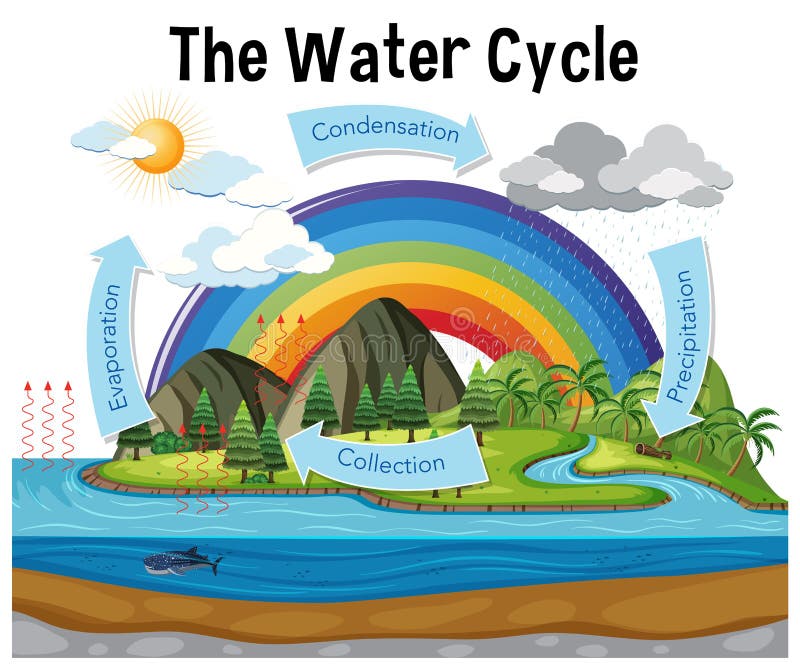

Place one dish in the sunlight, or if the sun isn’t shining, place the dish under and close to a light source. Get two dishes and put about 10 ml (two teaspoons) of water in each dish. Paper and pencil for each student or a class chart Consider weather and temperature as you list examples. Discuss with your partner what happens to water after it evaporates. On your paper list some other examples of evaporation. The process of water “going” into the air is called evaporation. In one year, a large oak tree can transpire 40,000 gallons (151,000 liters) of water! Water moves through a plant from the root and eventually evaporates from tiny pores in the leaves.

Think of it as a plant’s version of sweating.

One way water molecules move around is through evaporation from plants. Then it continues on its trip around the world. A water molecule hangs out in the air for about 10 days before condensing and becoming rain, hail, or even morning dew. The atmosphere also transports and stores water molecules. Even magma contains water-volcanic eruptions bring water from deep in the earth to the surface. It’s stored in ice, snow, and the ground. Water moves through condensation, evaporation, and precipitation (rain and snow). In addition to oceans, lakes, and rivers, the Earth stores and transports water in many ways. The Earth always has 332.5 million cubic miles (1.386 billion cubic kilometers) of water. The water cycle is the constant movement and storage of water throughout the Earth. The water you drink could have come from a volcano, then filtered through a giant sequoia tree, ridden the rapids, evaporated into the atmosphere, turned into grapefruit-size hail, plummeted to the Earth, disappeared into a stream, then circled the world again and again until it ended up in your glass. The water you’re drinking might have come out of George Washington’s tooth soaking cup! Before you spit it out, you should know water has been everywhere. Gravity causes precipitation to fall from clouds and water to flow downward on the land through watersheds. Sunlight causes evaporation and propels oceanic and atmospheric circulation, which transports water around the globe.

Energy from the sun and the force of gravity drive the continual cycling of water among these reservoirs. Water is found almost everywhere on Earth, from high in the atmosphere (as water vapor) to low in the atmosphere (precipitation, droplets in clouds) to mountain snowcaps and glaciers (solid) to running liquid water on the land, ocean, and underground. Students will learn about the cycle of water-the important processes of accumulation, evaporation, condensation, and precipitation, and what causes water to move throughout the earth and its atmosphere.


 0 kommentar(er)
0 kommentar(er)
